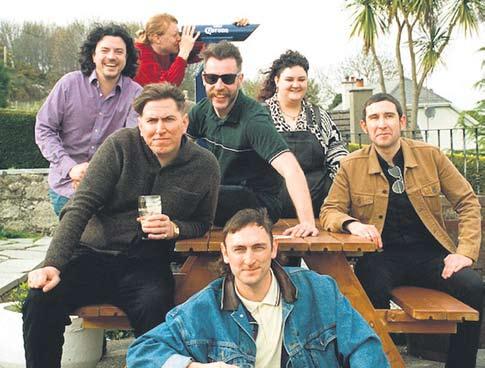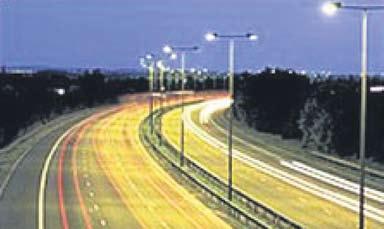
2 minute read
Dundalk musicians take part in Ryan’s Late Late Show farewell
from 31-05-2023

other sections of the national road network, as part of a suite of initiatives undertaken by tII in relation to energy usage reduction measures.
Advertisement
The first of these lighting revisions occurred in 2017. tII’s strategy on revised route lighting reflects the significant changes in route lighting design standards since 2007 which have identified a greatly reduced requirement for the ‘lit area’ and, by implication, a significant amount of surplus lighting along sections of motorways constructed pre-2007.

“A study of the collision rate at locations where lighting has been switched off has concluded that there has been no implication for road safety. the collision rate for the three junctions referred to in your correspondence (Junctions 7 - 9 ) have either remained the same or have reduced since the last collision analysis on the national road network was carried out, prior to the lights being turned off. there was therefore no increase in collision rate at any of these locations.
“While the current europe wide energy security concerns and rising energy costs have placed a sharper focus on energy consumption, the reduction in route lighting initiative arose from Ireland’s National Energy Efficiency Action Plan which was launched in 2009 and set out several objectives to improve Ireland’s energy efficiency by the year 2020. A national improvement target of 20% was set, with a higher target of energy efficiency improvement of 33% for the public sector. the Public Sector Energy Efficiency Strategy published in 2020 credits road lighting improvements as having played a significant role in the achievement of these targets.
“For the next decade, there are more demanding european, national and public sector targets relating to energy and emissions. the Climate Action and Low Carbon Development (Amendment) Act 2021 establishes a legally binding framework with clear targets and commitments set in law and ensures the necessary structures and processes to allow the achievement of our national, eu and international climate goals and obligations in the near and long term. these commitments include emission reductions of 7% per annum, 51% by 2030 and a net zero target/goal by 2050. More recently, the 2023 Climate Action Plan also places specific obligations on public sector bodies such as tII. Reducing route lighting consumption will continue to play a significant role in tII’s efforts,” concluded the statement.
DuNDALk musicians Andrew hendy and Andrea Corr delighted the audience of the final episode of The Late Late Show hosted by Ryan Tubridy on Friday last.
Andrew and Andrea took part in a lively trad session alongside a number of wellknown Irish musicians for Tubridy’s final episode.
“It was the last hurrah for Ryan. The following day myself and the rest of the band, The Mary Wallopers, flew to Manchester for a festival,” said the Avenue Road man.
“The Mary Wallopers have a busy few months ahead of us. We found out two or three months ago that we will be playing Glastonbury this summer.
“We have actually played in Glastonbury three times before. We played at the underground Piano Bar.”
Andrew added: “It’s a secret stage that’s like a hole in the ground. This year will be different. We will be playing on a massive stage with an 8,000 person capacity.
“We are buzzing to go back to Glastonbury. Besides that we are playing in Paris on the Wednesday before Glastonbury starts.
“We will do two gigs at
Glastonbury. It’s going to be insane. Then later this summer we have festivals all over europe and we will go to America in October to perform.” he continued: “The rest of the year is carnage as we have a second album coming out at the end of the summer.
“It’s so different to the pandemic. The Mary Wallopers are so busy now. It’s a feast or famine scenario.”
For more information about The Mary Wallopers and their upcoming tour dates please visit www.marywallopers.com.







